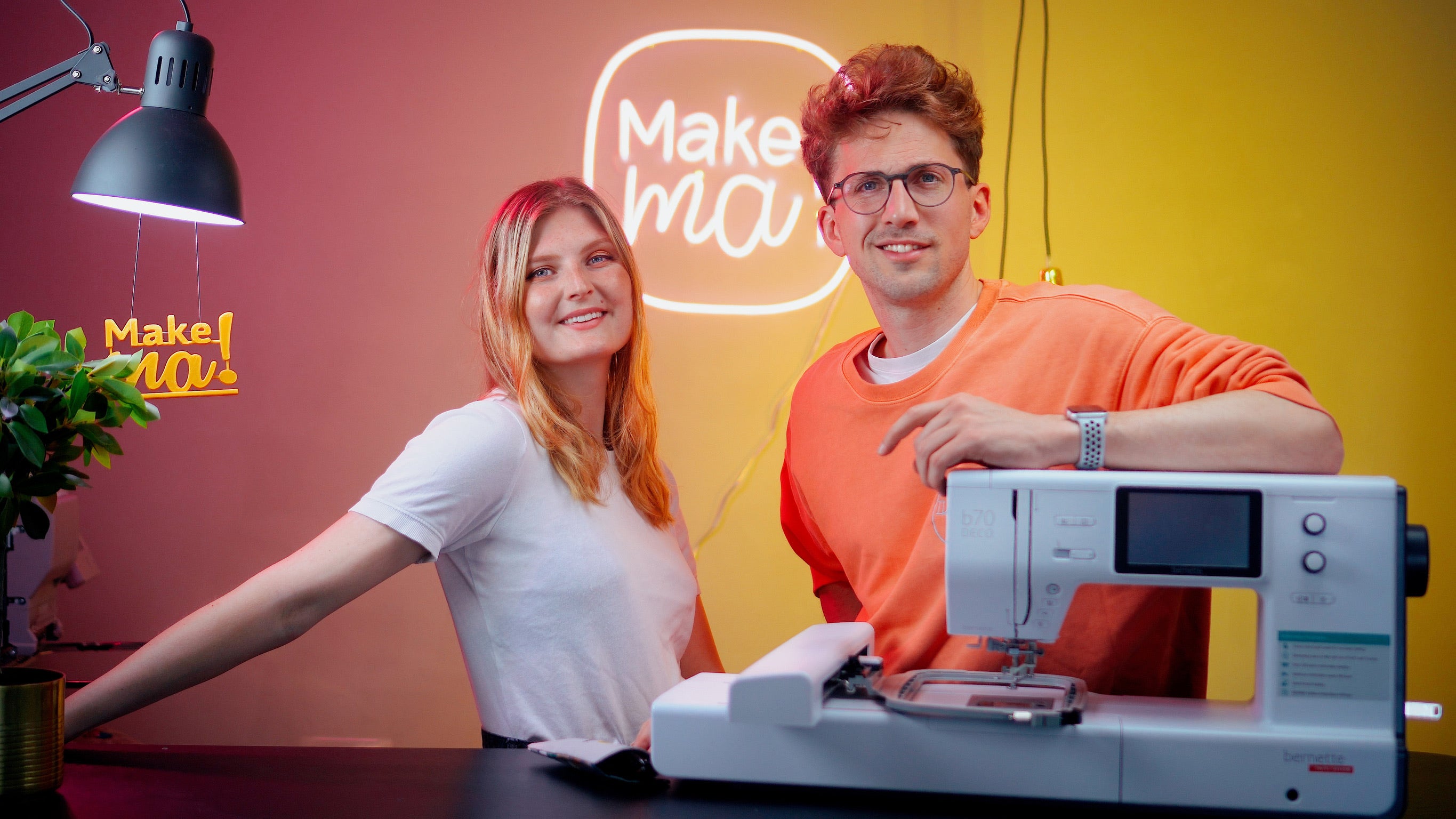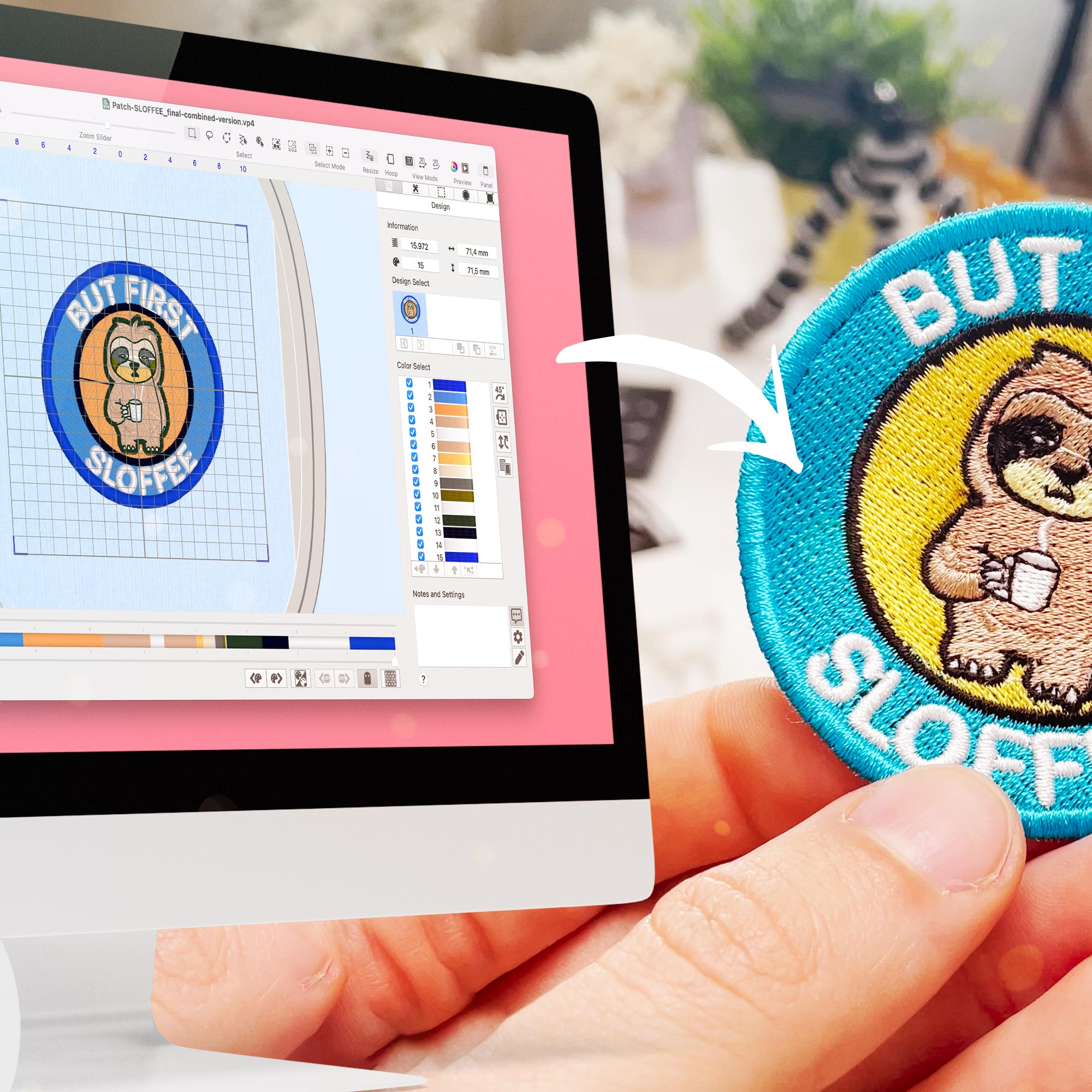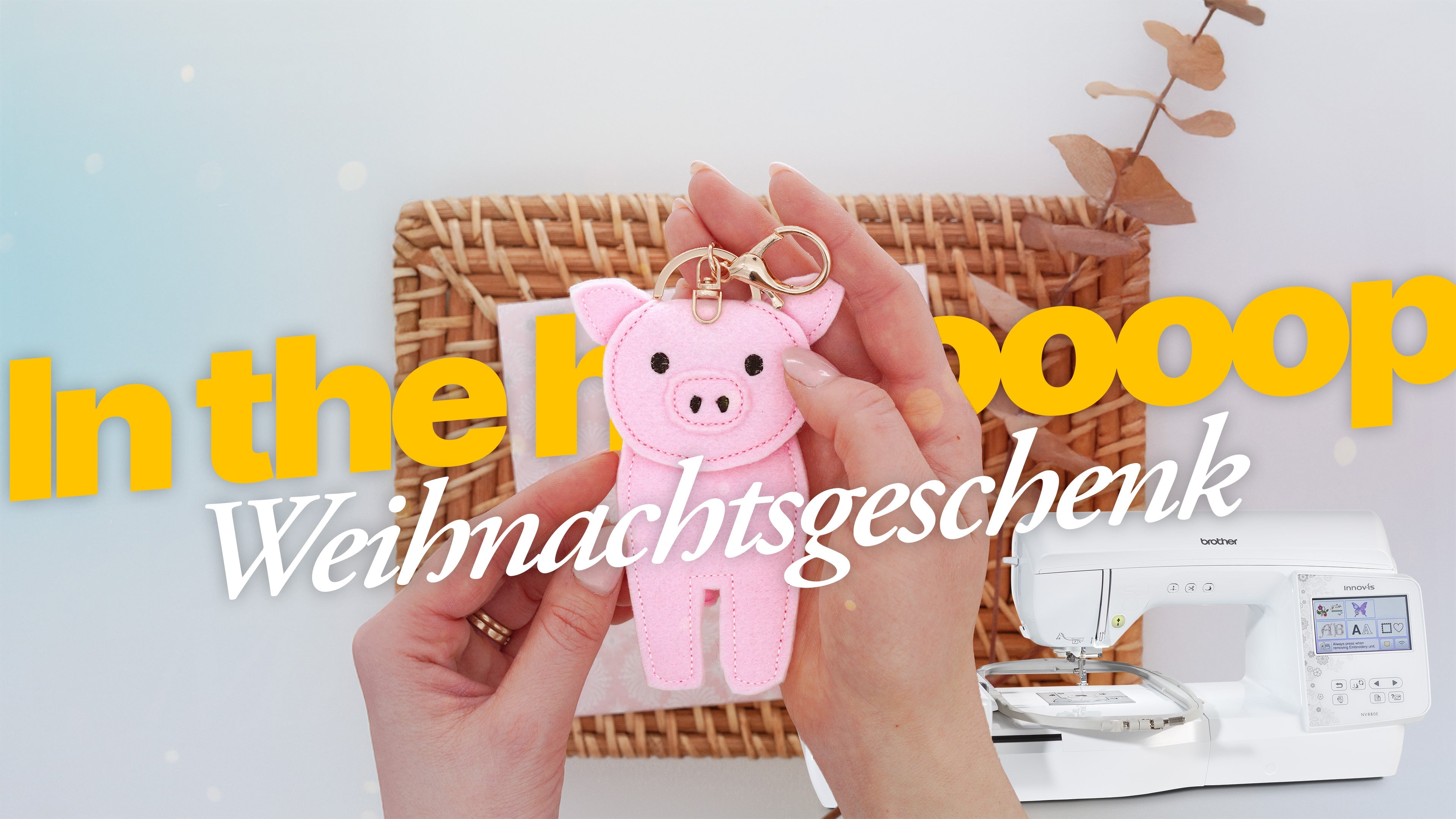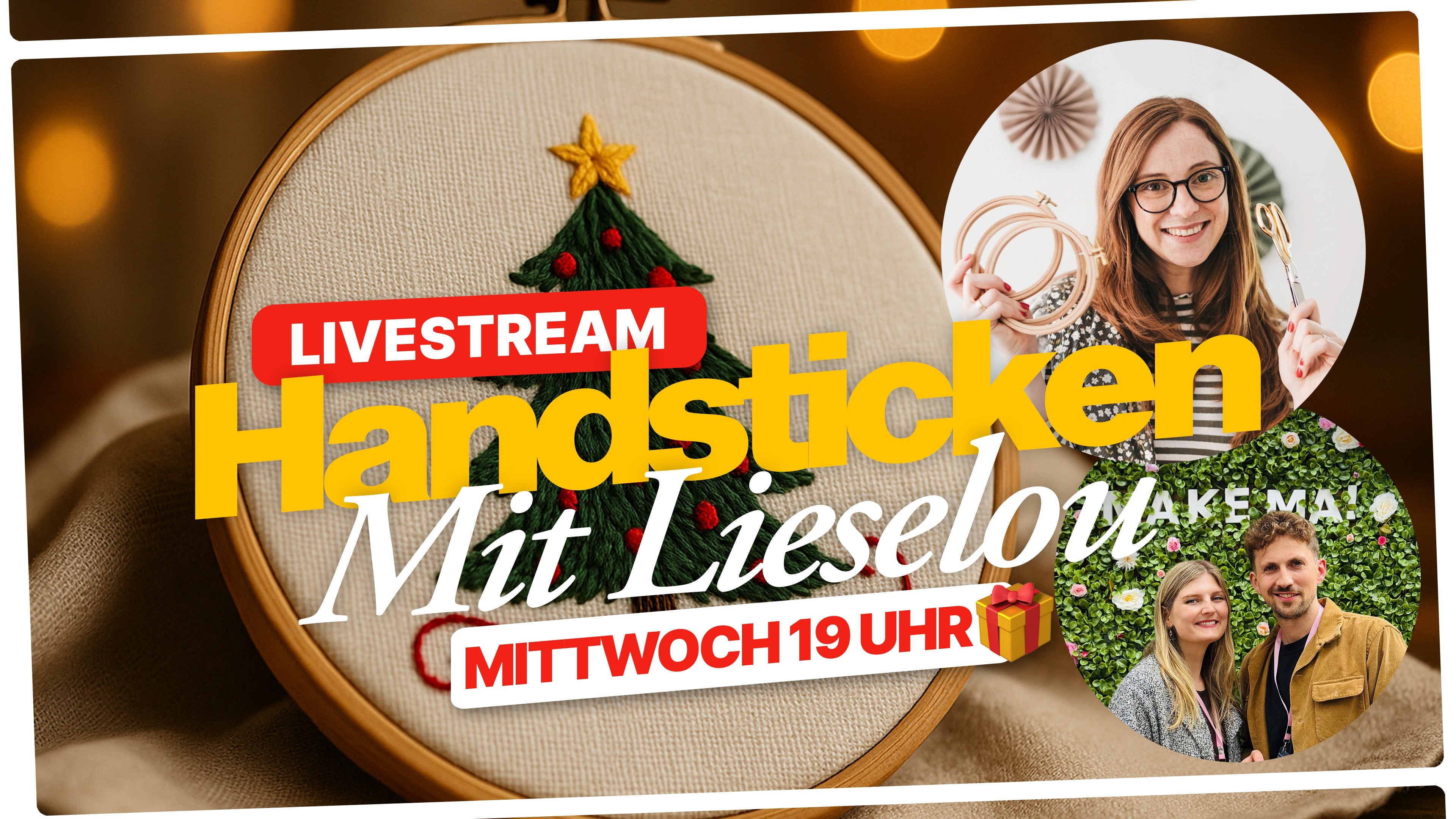What is Ultra Solvy and why is it ideal for patches?
Ultra Solvy is an extra-strong, water-soluble embroidery foil that is clamped into the embroidery frame like a stabilizer. Unlike fabric, no backing material remains after embroidery. This creates freestanding patches with a professional border – without a visible backing.
Step-by-step: How to embroider patches with Ultra Solvy
1. Clamp Ultra Solvy
Stretch the Ultra Solvy tightly into your embroidery frame. Make sure the tension is even—the film must lie flat.
2. Embroider the patch base
The embroidery file begins with a placement stitch that defines the shape of the patch. Place your fabric (e.g., twill or felt) precisely on top and secure it with a securing or appliqué stitch .
3. Cut out close to the edge
Use appliqué scissors to neatly cut off the excess fabric edges along the fusing line – without damaging the Ultra Solvy.
4. Embroider the motif
Now the actual patch motif is embroidered – logo, text, or symbol. Recommended embroidery thread: 40s polyester or viscose thread from Gunold, Madeira, or Sulky.
5. Embroider satin edge / border
The embroidery machine "chains" the patch all the way around with a dense satin stitch or flat stitch . This contour ensures stability and a clean outer edge.
6. Remove patch
After embroidery, the patch can be carefully removed from the Ultra Solvy – it is now free-standing.
7. Optional: Coat the back
Depending on the intended use, you can equip the back of the patch with BSN film (iron-on coating) , Velcro or sewing fleece .
Which materials are suitable for patch embroidery?
| component | Recommendation |
| Carrier material | Ultra Solvy (water-soluble embroidery foil) |
| Material | Patch base, twilly, coated felt, artificial leather with textile backing |
| yarn | 40s embroidery thread (polyester or viscose) |
| Scissors | Application scissors for clean edges |
What is the advantage over sewn-on patches?
Using Ultra Solvy , freestanding, precise shapes are created—without any visible backing or backing. You can use the finished patches:
- Sewing on
- Iron-on (with BSN)
- Equipped with Velcro
- Give away or sell
Tip for clean results
After removing the finished patch from the film, let it soak briefly in lukewarm water. This will remove any remaining Ultra Solvy residue from the edges for a clean, professional finish.
Conclusion
Making your own patches with an embroidery machine is best done with Ultra Solvy. This embroidery foil offers ideal conditions for precise borders and freestanding results – with no visible backing. With the right file and a little practice, you can easily create your own custom patches.












Split:
Embroidering leather
Is there free embroidery software?